43 how to read food labels carbohydrates
Reading food labels: Tips if you have diabetes - Mayo Clinic Sugar-free foods may play a role in your diabetes diet, but remember that it's equally important to consider carbohydrates as well. A sugar-free label means that one serving has less than 0.5 grams of sugar. When you're choosing between standard products and their sugar-free counterparts, compare the food labels. How to Read Carbohydrates on Food Labels - GlycoLeap When learning how to read carbohydrates on food labels, always remember that 1 serving of carbohydrate is equal to 15 g of carbohydrates. If you want to have a snack, it is recommended to eat no more than 1 to 2 servings of carbohydrates in one sitting. That would be around 15 to 30 g of carbohydrates. Snack = 15 - 30 g of carbohydrate
The Basics of the Nutrition Facts Label Mar 04, 2022 · Carbohydrates: There are three types of carbohydrates: sugars, starches and fiber. Eat whole-grain breads, cereals, rice and pasta plus fruits and vegetables. Sugars: Simple carbohydrates, or sugars, occur naturally in foods such as fruit (fructose) and milk (lactose) or come from refined sources such as table sugar (sucrose) or corn syrup.

How to read food labels carbohydrates
How to Understand and Use the Nutrition Facts Label | FDA For certain products that are larger than a single serving but that could be consumed in one sitting or multiple sittings, manufacturers will have to provide "dual column" labels to indicate the... How to Read a Food Label to Make Sure It's Keto in 3 Easy ... Subtract Dietary Fiber and Sugar Alcohols (if any) from the Total Carbohydrate. *Total Carbohydrate minus Dietary Fiber, minus Sugar Alcohol (if any) = Net Carbs Total Carbohydrate ( 4 grams) - Dietary Fiber ( 1 gram) = 3 gram s Net Carbs The Total Carbs for ⅔ cup of this packaged cauliflower is 4 grams, and the Net Carb is 3 grams. Why the 2 camps How To Figure Out The Carbs On Nutrition Labels - Eat Out ... Carbs on a label also refer to fiber and the sugars that are the composition of the food — like the natural sugars that are found in fruits, vegetables, grains, and milk. Carbs are the body's main source of fuel — it's the simple added sugars like table sugar and syrups (and the foods that contain them) that give the quick rise and fall ...
How to read food labels carbohydrates. How to Read Carbohydrates on Nutrition Labels|How to Read ... The top carbohydrates row is the total amount of carbs present. Made up of all the sugars, dietary fibre and starch, which is the remaining amount after the sugar and fibre. So in the above muesli label we have 51.8g of carbs per 100g. 12.7g is sugar 7.9g is fibre Which means that 31.2g is starch (51.8 - 12.7 - 7.9) Understanding Fiber :: Diabetes Education Online On Nutrition Facts food labels, the grams of dietary fiber are already included in the total carbohydrate count. But because fiber is a type of carbohydrate that your body can’t digest, it does not affect your blood sugar levels. You should subtract the grams of fiber from the total carbohydrate. Reading Food Labels for Carbohydrates - dummies Reading food labels is a vital skill for anyone who counts carbohydrates. Look for the line that reads "Total Carbohydrate" on the label. The value on this line will tell you how many grams of carbohydrates are in one serving of the food. Check the number of servings per container to see if your package has one or more servings. Reading Food Labels | ADA - American Diabetes Association The Nutrition Facts labels on foods are really the key to making the best choices. We'll cover the basics so that these labels make shopping easier for you. Get started Understanding Carbs You've heard it all. From carb-free to low-carb, to whole and empty carbs, it's hard to know what it all means. Learn more Food & Blood Sugar
Low Carb Guide to Understanding Nutrition Labels According to labeling laws in the U.S., if a food contains less than 0.5g of trans fat per serving, the label can say 0g, so be sure to read the list of ingredients. You can spot trans fats by the words "hydrogenated" or "partially hydrogenated" with oils. Sugar-free or Low-carb: Don't be fooled by clever packaging and slick marketing. PDF How to Read the Food Label Total carbohydrate Carbohydrates are in bread, pasta, rice, cereal, fruit, potatoes, starchy vegetables, and sweets. If you have diabetes, pay attention to total carb grams per serving, not just the sugar grams. Dietary fiber Fiber is in whole grains, vegetables, and fruits. It's important to eat plenty of these foods. How to Read the New Food Label - The Johns Hopkins Patient ... Total Carbohydrates. Carbohydrates raise blood glucose, so this part of the food label is most familiar to people with diabetes. Total carbohydrates include starches, fiber, sugars, and sugar alcohols. If you are counting carbohydrates, count total carbohydrates in grams. Look for foods with fiber which helps to slow the rise in glucose. Food energy - Wikipedia Many governments require food manufacturers to label the energy content of their products, to help consumers control their energy intake. To facilitate evaluation by consumers, food energy values (and other nutritional properties) in package labels or tables are often quoted for convenient amounts of the food, rather than per gram or kilogram; such as in "calories per serving" or "kcal per 100 ...
Reading labels - Diabetes UK Always look at the 'total carbohydrate' on the label when carb counting. This will make sure you are counting both the complex (starchy) and simple (sugary) carbs in your food. Both will raise your blood glucose (blood sugar) levels, and need to be matched with insulin. How to Read a Food Label - Atkins Here's what you should be aware of on a nutrition label: Serving size (if you have more than one serving, be sure to add in the carbs) Total carbohydrates expressed in grams Amount of dietary fiber expressed in grams (subtract from total number of carbs to get the net carb count) Sugars expressed in grams How to Read Food Labels | Your Low Carb Hub The below label shows there are 4.3g of carbs in a 15ml serving size which is equivalent to one tablespoon. 3.4g of this is sugar. There is 22.7g of sugar in 100ml, that's 5.6 teaspoons of sugar. The World Health Organisation (WHO) recommends no more than 5-10 teaspoons of added sugar in an entire day. Be aware of hidden sugars. How to read food labels: MedlinePlus Medical Encyclopedia Adjust the number of calories if you eat smaller or larger portions. This number helps determine how foods affect your weight. The total carbs (carbohydrates) are listed in bold letters to stand out and are measured in grams (g). Sugar, starch, and dietary fiber make up the total carbs on the label. Sugar is listed separately.
The 7 Best Healthy Cat Foods For Indoor Cats In 2022 - All ... Avoid labels including vague ingredients like “poultry”, “meat byproducts”, and “rendered meals”. Ingredients like corn, soy, and wheat are fillers that don’t offer any nutritional value for your cat. They’re cheap binders and should always be avoided. Also Read: Top 5 Best Kitten Foods On the Market Today
How To Read Food and Beverage Labels - National Institute on ... Feb 24, 2022 · Sometimes, food and beverage packaging includes terms that may try to convince the consumer the food is healthy. To help avoid confusion, the FDA sets specific rules for what food manufacturers can call “light,” “low,” “reduced,” “free,” and other terms. This type of labeling may have little to do with how nutritious the food is.
Carb vs. Sugar: How to Understand Nutrition Labels Carbohydrates are actually comprised of three nutrients: carbohydrates, fiber, and sugar. You may, and will see, foods that are very low in "sugar" but high in carbohydrate. Example 1 Let's look at a popular unflavored old fashioned oats label. Here we see that the total sugar is 1 gram. Looks great right? This item is practically sugar free!
How to Read Food Labels for a Heart-Healthy Diet | Johns ... The correct answer is Servings per container "A lot of people don't pay attention to serving size when they read nutrition labels, so they wind up getting double, triple or even quadruple the amount of calories, carbs, fats and so on that they think they are," says Johns Hopkins exercise physiologist Kerry J, Stewart, Ed.D.
PDF Read the Food Label for Carbohydrates Read the Food Label for Carbohydrates Food labels help you choose foods that are lower in calories and in carbohydrates and sweeteners. Here is a food label for a 12-ounce regular soda. The label provides lots of useful information. 1. Serving Size and Number of Servings The serving size is 12 ounces. There's 1 serving in this container. 2.
How to Use the Nutrition Facts Label - Diet Doctor Many low-carb eaters use the nutrition facts label to calculate how many grams of net carbs 1 are in their food. It's a relatively easy calculation. Once you get the hang of it, it takes just seconds. Calculating net carbs can be a great way to compare two similar products. For example, consider the label below for Green & Black's 85% Cacao ...
Learning To Read Labels :: Diabetes Education Online On a nutrition food label, subtract the fiber from the total carbohydrate amount. When you read food labels, the grams of sugar are already included in the total carbohydrate amount, so you do not need to count this sugar amount separately. The grams of sugar listed include both natural sugars, from fruit or milk, and added sugars.
Food Labels | CDC All the numbers on this label are for a 2/3-cup serving. This package has 8 servings. If you eat the whole thing, you are eating 8 times the amount of calories, carbs, fat, etc., shown on the label. Total Carbohydrate shows you types of carbs in the food, including sugar and fiber. Choose foods with more fiber, vitamins, and minerals.
This Is How to Read a Nutrition Facts Label on the Keto ... The Basics of Reading Food Labels: How to Read a Label in 5 Steps (For Any Diet) To make healthy food choices, stick to these five steps. Step #1: Check the Serving Size. Always start by looking at its serving size. This will ensure that you're calculating nutrition based on the amount of food you're actually consuming.
Vitamins (for Kids) - Nemours KidsHealth B vitamins in whole grains help your body make energy from food. Vitamins Hang Out in Water and Fat. There are two types of vitamins: fat soluble and water soluble. When you eat foods that contain fat-soluble vitamins, the vitamins are stored in the fat tissues in your body and in your liver. They wait around in your body fat until your body ...
How To Read Nutrition Labels (Like a Pro) - Ditch The Carbs Firstly you need to understand the difference between total and net carbs. TOTAL CARBS = sugars + starches +fibre NET CARBS = total carbs - fibre Carbohydrates will be on the nutrition label are often broken down into carbohydrates, sugars, starch, and fiber. However, each brand may display its nutritional contents differently.

Read food labels – Step 3: Check the ingredient list for sugars, refined carbohydrates, and ...
How to read and understand a nutrition label - CNET Sugar is also part of carbs on a nutrition label, and furthermore, it has its own subcategories. One of these, "Added Sugars," will be required on US labels, effective January 2020 .
Reading Food Labels | GI Foundation Home / Top Tips for Low GI Living / Reading Food Labels Reading Food Labels To help work out the amount of carbohydrates (or number of exchanges) in a food and make low GI choices, a basic understanding of food labels is important.
How To Figure Out The Carbs On Nutrition Labels - Eat Out ... Carbs on a label also refer to fiber and the sugars that are the composition of the food — like the natural sugars that are found in fruits, vegetables, grains, and milk. Carbs are the body's main source of fuel — it's the simple added sugars like table sugar and syrups (and the foods that contain them) that give the quick rise and fall ...
How to Read a Food Label to Make Sure It's Keto in 3 Easy ... Subtract Dietary Fiber and Sugar Alcohols (if any) from the Total Carbohydrate. *Total Carbohydrate minus Dietary Fiber, minus Sugar Alcohol (if any) = Net Carbs Total Carbohydrate ( 4 grams) - Dietary Fiber ( 1 gram) = 3 gram s Net Carbs The Total Carbs for ⅔ cup of this packaged cauliflower is 4 grams, and the Net Carb is 3 grams. Why the 2 camps
How to Understand and Use the Nutrition Facts Label | FDA For certain products that are larger than a single serving but that could be consumed in one sitting or multiple sittings, manufacturers will have to provide "dual column" labels to indicate the...



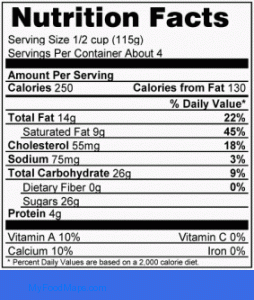


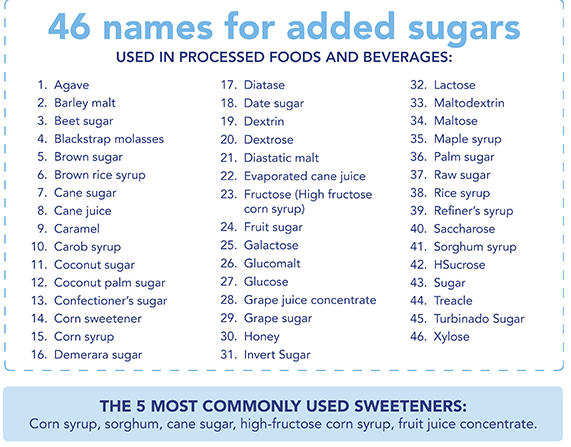
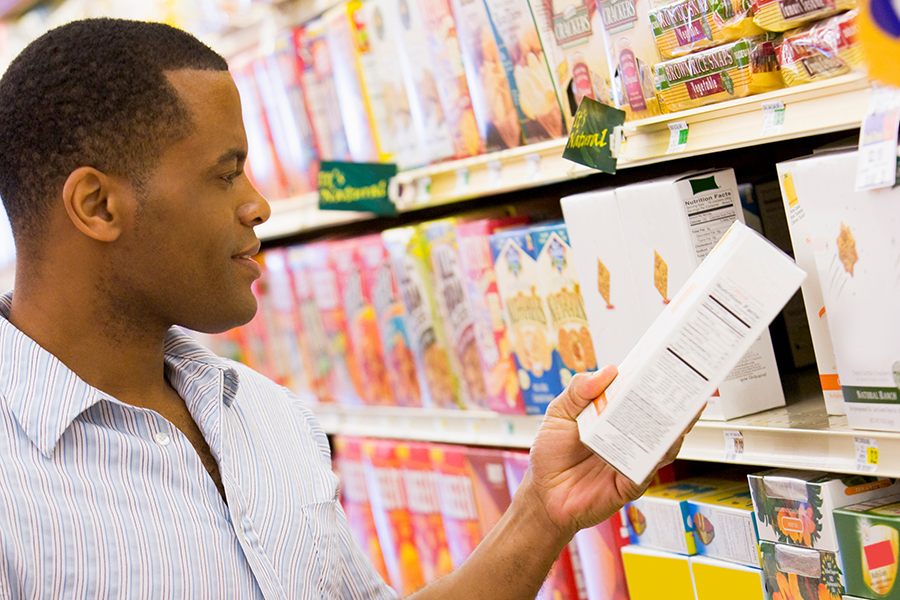


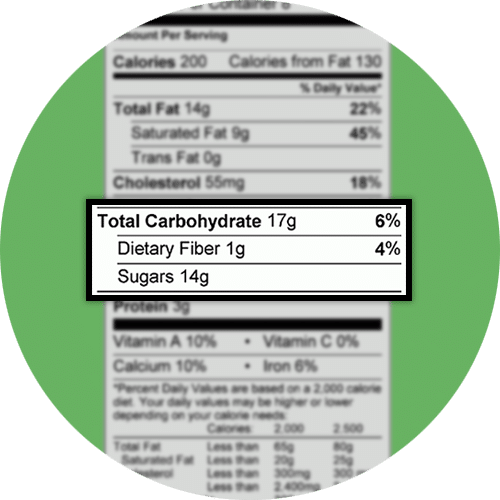
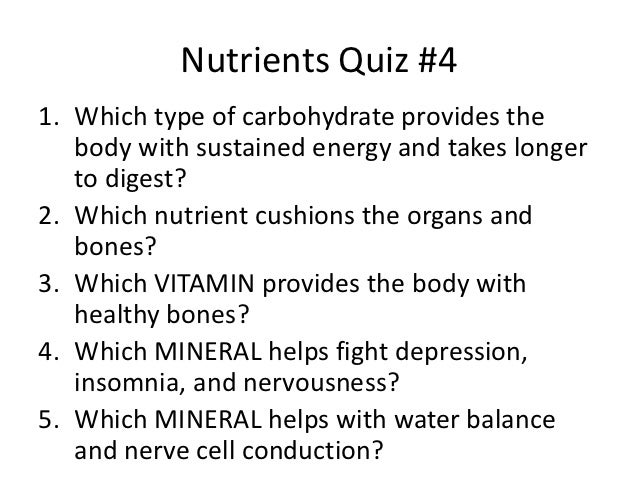

Post a Comment for "43 how to read food labels carbohydrates"